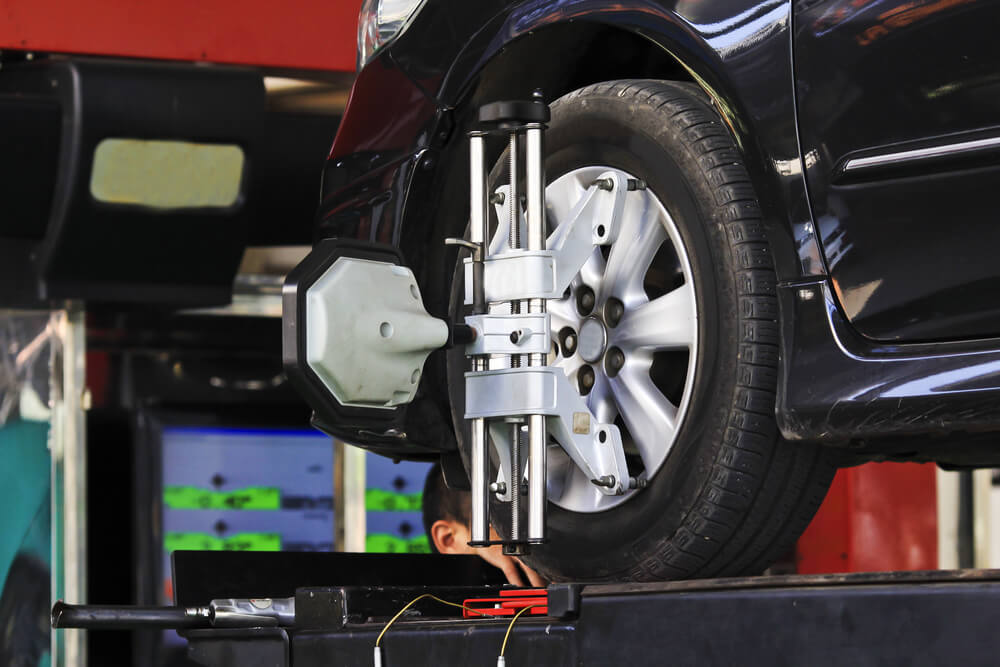Detecting misalignment early can save you from a cascade of issues down the road. Be attuned to the warning signs that your wheels may be out of alignment. Does your steering wheel sit at an angle even when driving straight? Is there uneven tire wear, noticeable pulling to one side, or a vibrating sensation? These are symptoms indicating a potential misalignment. Being proactive in recognizing these signs allows you to address alignment issues promptly, preserving your vehicle’s health and preventing further complications.
Impact on Suspension System: A Smooth Ride
Ensuring Suspension Health
A smooth, comfortable ride is a hallmark of a well-maintained vehicle, and wheel alignment plays a key role in achieving this. Misaligned wheels can wreak havoc on your suspension system, causing unnecessary strain and wear. When your wheels are precisely aligned, the suspension components work harmoniously to absorb bumps and undulations, providing you with a ride that feels like gliding on air. Let’s explore how wheel alignment contributes to a suspension system that ensures every journey is a pleasure, not a jolt.
Safety Benefits: Aligning for Road Confidence
Ensuring Road Safety
Safety on the road is non-negotiable, and wheel alignment is a silent contributor to your overall safety. Precise alignment ensures that your vehicle responds predictably to your steering inputs, reducing the risk of unexpected swerves or drifts. In emergencies, having aligned wheels can make a crucial difference. Join us in unraveling the safety benefits of wheel alignment, aligning not just your wheels but also your confidence on the road.
Cost-Effective Maintenance: Aligning for Savings
Savings Through Preventive Maintenance
When it comes to vehicle maintenance, an ounce of prevention is worth a pound of cure. Proper wheel alignment falls squarely into the category of preventive maintenance, and the savings it offers are manifold. By aligning your wheels at regular intervals, you’re preventing uneven tire wear, reducing strain on suspension components, and optimizing fuel efficiency. The upfront investment in wheel alignment translates into long-term savings, sparing you from the costs associated with premature tire replacement, extensive suspension repairs, and excessive fuel consumption. Let’s explore how aligning your wheels is not just an expense – it’s a strategic investment in the longevity of your vehicle.
DIY Alignment Tips: Navigating Basic Adjustments
Empowering Drivers
While professional wheel alignment is recommended for precision, there are basic DIY tips that empower drivers to perform initial assessments. From checking tire wear patterns to ensuring steering wheel centering, these tips can offer insights into potential alignment issues. By understanding and implementing these basic adjustments, drivers can take a proactive role in maintaining their vehicle’s alignment between professional service intervals. Let’s delve into the DIY realm and discover how drivers can navigate these basic adjustments to keep their wheels in harmony.
Frequently Asked Questions (FAQs) About Wheel Alignment
Q: What is wheel alignment, and why is it important?
A: Wheel alignment is the adjustment of a vehicle’s suspension components to ensure the wheels are perpendicular to the ground and parallel to each other. It’s crucial for optimal vehicle performance, handling, and tire longevity.
Q: How often should I have my wheels aligned?
A: Manufacturers typically recommend having your wheels aligned every 6,000 to 10,000 miles. However, it’s advisable to check for alignment issues if you experience steering problems or notice uneven tire wear.
Q: What are the signs of misaligned wheels?
A: Signs include uneven tire wear, a steering wheel that sits at an angle when driving straight, a vehicle pulling to one side, or a vibrating sensation while driving.
Q: Can misaligned wheels affect fuel efficiency?
A: Yes, misaligned wheels create additional resistance, leading to increased fuel consumption. Proper wheel alignment contributes to better fuel efficiency.
Q: Can I align my wheels at home?
A: While professional alignment is recommended for precision, basic DIY tips can help drivers perform initial assessments between professional service intervals.
Q: Does wheel alignment impact suspension health?
A: Yes, misaligned wheels can strain the suspension system, leading to premature wear. Proper alignment ensures the suspension components work harmoniously for a smooth ride.
Q: Is wheel alignment necessary for all vehicles?
A: Yes, wheel alignment is essential for all vehicles. It ensures optimal handling, tire longevity, and overall vehicle performance.
Q: Can wheel alignment improve safety?
A: Absolutely. Proper wheel alignment contributes to predictable steering responses, reducing the risk of unexpected swerves and enhancing overall road safety.
Q: How long does a wheel alignment service take?
A: On average, a wheel alignment service takes about 30 minutes to an hour. However, this can vary based on the specific requirements of the vehicle.
Q: Can wheel alignment save me money in the long run?
A: Yes, aligning your wheels is a preventive maintenance measure that can save you money by preventing uneven tire wear, reducing suspension strain, and optimizing fuel efficiency.
Conclusion:
In the grand symphony of automotive performance, wheel alignment plays a melody that resonates through every component of your vehicle. From enhanced handling and prolonged tire life to fuel efficiency and safety benefits, the advantages are clear. As we conclude our exploration, the overarching theme is clear – aligning your wheels is not just a maintenance task; it’s a key to unlocking your vehicle’s full potential. Embrace the benefits, prioritize alignment in your maintenance routine, and let your vehicle roll down the road to success with confidence.





